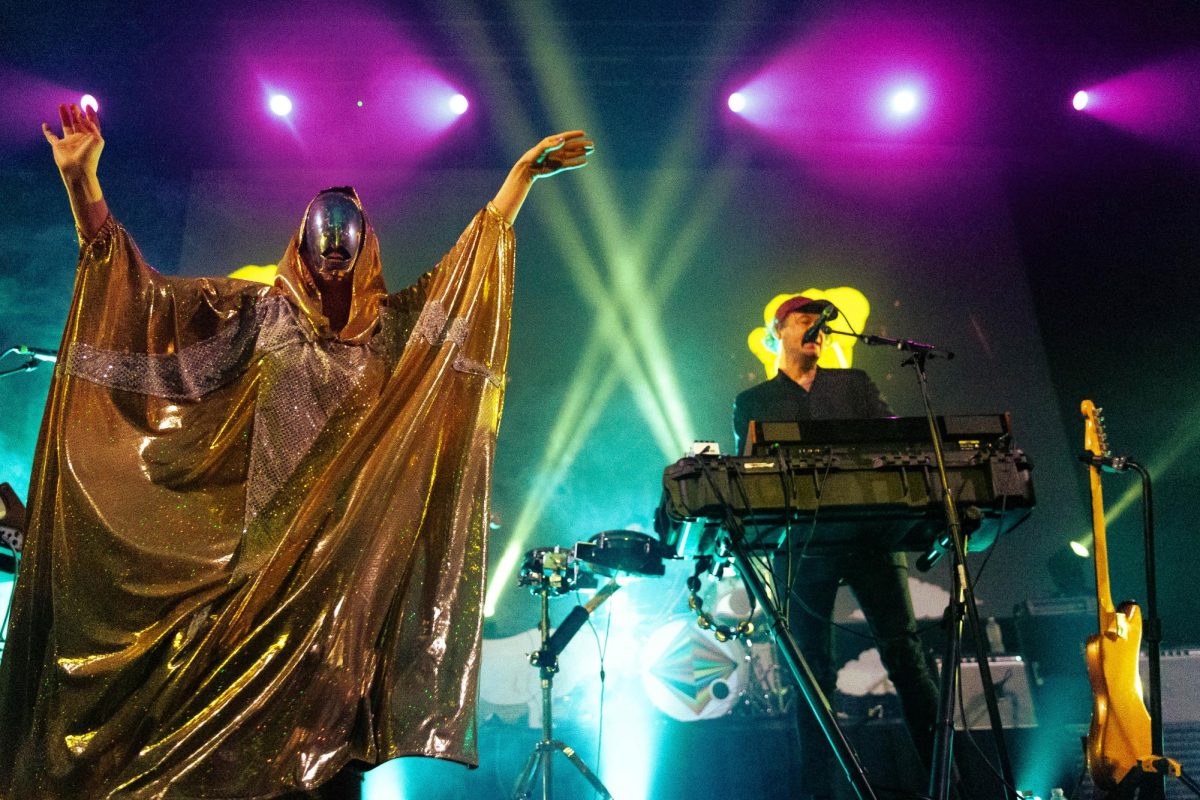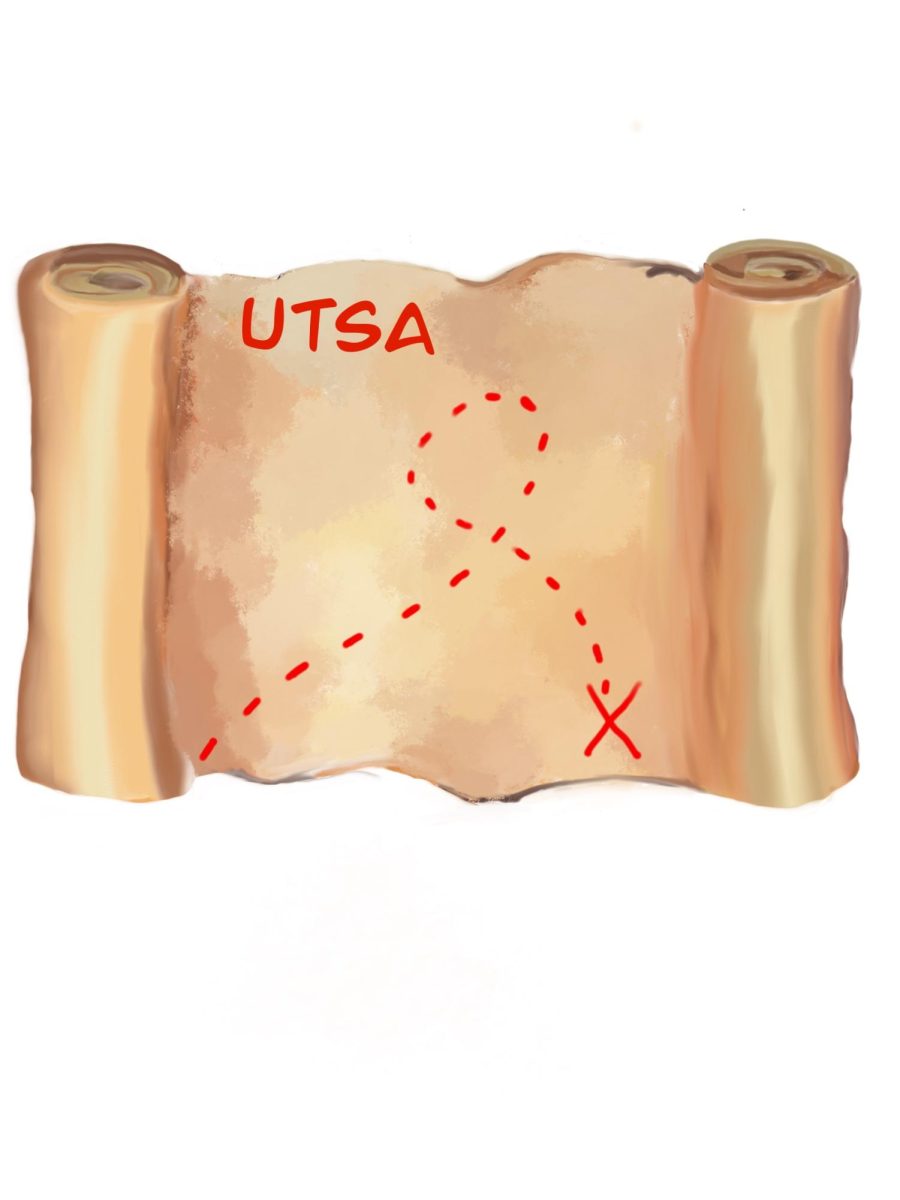Walking with the confidence and stature that made him a household name in the Star Wars franchise, Darth Vader walked calmly through a crowd of children and — without hesitation — hugged and shook their hands while taking photos with their families.
This was proof that the alien and android invasion had already begun. It’s just not where you thought it would be.
Instead of looking toward the skies for flashing lights, venture out to the Witte Museum’s brand new “Alien Worlds and Androids” interactive exhibit that opened Feb. 22.
Presented in the Kathleen and Curtis Glenn Gallery, the interactive exhibit invites you to discover how “science fiction meets science fact.”
Venture through nine different sections where everything you always wanted to know about alien life on earth and in other solar systems is on display to be discovered.
Enjoy a wealth of information about technologies used to discover alien life, solar systems and planets. Find out how robotics and artificial intelligence is making an impact, not just on the movie screen but in our everyday lives.
“Are We Alone?” sets the pace by confronting the questions about life in the universe that people for centuries have always pondered, while “Looking for Life in Space” examines the role of an astrobiologist in search of sophisticated alien civilizations and the habitation conditions on exoplanets (planets outside the solar system).
The “Alien Life on Earth” section widens your experience by introducing you to the multitude of seemingly alien life that already inhabits the earth. It explains that some scientists believe life on earth started near hydrothermal vents under the ocean, producing the carbon dioxide that fostered the first carbon molecules.
Study the creatures known as “extremophiles” that have been known to thrive in the harshest of conditions here on earth — adding credence to the notion that life can thrive in any universe, in any environment.
Perhaps the most chilling section is “The Human Microbiome,” where you learn one out of every ten cells in your body is human; the rest are bacteria and fungi. If you need more insight you can venture to a touchscreen monitor and inform yourself about each of the microbes that are currently in your body.
“Explore the Solar System” furthers the universal theme of planet and solar system exploration. The exhibit identifies the technology that has been gathering data for decades about the farthest reaches of planets that have been explored so far, such as NASA’s use of probes, such as Voyagers 1 and 2 that were launched back in 1977.
One of the most exciting parts of the exhibit is the “I-Cyborg” area that is highlighted by full-scale replicas of famous movie characters such as Iron Man, the alien that terrorized Sigourney Weaver in the “Alien” films and the head of a “T-800” from “Terminator 2: Judgment Day,” which includes a push button that mimics the machinery sound the head makes when moving, trigging a feeling that Arnold Schwarzenegger is right behind you.
“I think the kids being able to see characters from the movies and then tying it into science, everyday real life, robotics and how fantasy becomes reality is a big part of it,” said Ruben Luna, manager of exhibits at the Witte Museum. “As they get older, the kids seeing this will maybe pique an interest in them to want to pursue science.”
Moving further along, the exhibit shows the significance of the technological advancement of artificial body parts that have helped to extend the lives of men and women who have used them to either survive or better themselves. One example is the Israeli-produced robotic suit called the “ReWalk” that has people with traumatizing spinal injuries walking again.
Enhancing the overall involvement of the interactive exhibit are the “Artificial Intelligence and Robots,” “Robot Space Explorers” and “The Robotization of Planet Earth” sections.
Feast your eyes upon robots known only as C-3PO and Gort as their relevance in science fiction movies helps to complement the conception of how robots have become an essential player in a technology driven world.
Increase your knowledge of the use of GPS and military drones. Experience some robotic systems first hand by maneuvering one of the robotic arm displayed. Or witness the landing of NASA’s Curiosity rover that has been on Mars since 2012 and see how it has been spending its time on the red planet.
Finally, end your journey by exploring the natural history of meteorites, and don’t forget to stop by and feel actual lunar and Martian meteorites.
“It was very interesting. Usually people think about aliens in space. But it’s actually about life on earth and robotic life,” said Christie Sosa, who was on hand for the opening. “It’s good to see and experience all this and to be exposed to this kind of science.”
“Alien Worlds and Androids,” sponsored by Global Experience Specialists (GES) and assisted by the Jet Propulsion Laboratory (JPL) and NASA, will be on display until May 27.
For more information, call the Witte Museum at (210) 357-1863 or visit their website at wittemuseum.org.











